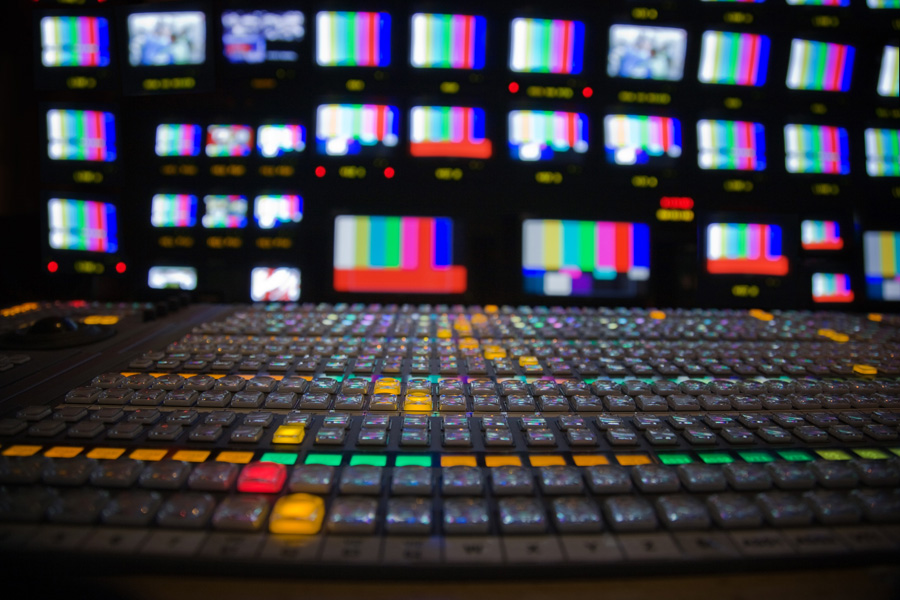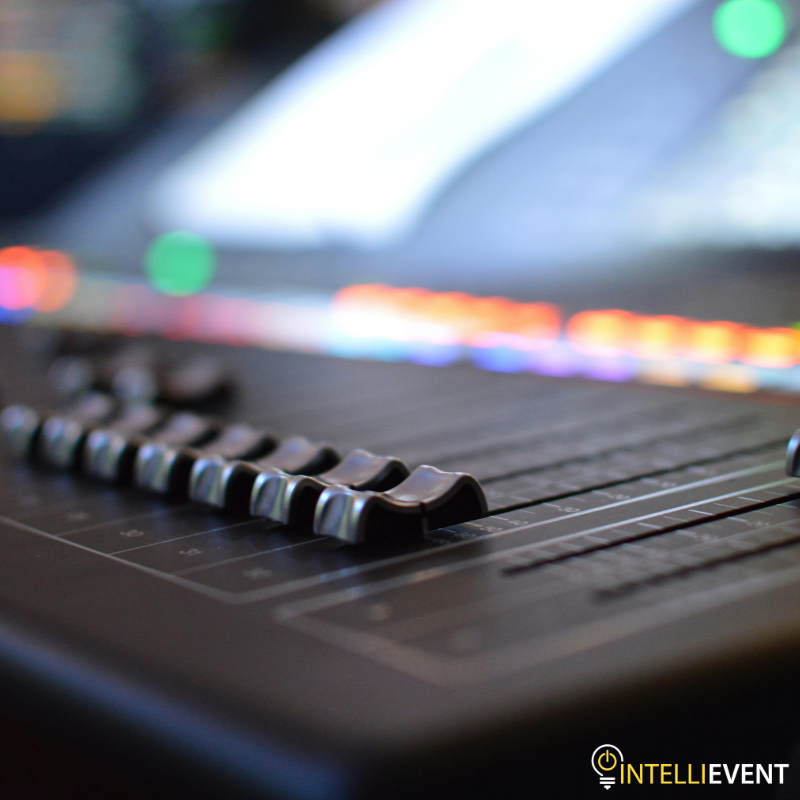Comprehending the Addition of Audio Visual Modern technology in Today's Educational Environments
The integration of audio-visual innovation in instructional settings has changed the mentor and finding out process. Educators now have accessibility to devices that cater to numerous learning styles, improving trainee interaction and collaboration. However, the consolidation of these modern technologies offers both opportunities and challenges. Comprehending exactly how to properly apply these tools is crucial. What approaches can instructors employ to maximize the benefits of audio-visual technology in their class?
The Advancement of Audio-Visual Innovation in Education
As instructional demands advanced over the decades, audio-visual innovation undertook substantial changes that improved the understanding environment. Devices such as film projectors and slide shows were the primary means of integrating aesthetic aspects into class. These very early modern technologies provided instructors with the capability to present details dynamically, yet they were limited in ease of access and interactivity.
With the development of video clip cassette recorders in the 1970s, classrooms started to incorporate documented lessons, expanding the scope of educational sources. The intro of desktop computers in the 1980s further changed this landscape, enabling the development of multimedia presentations and interactive discovering experiences.
The rise of the web in the 1990s marked a turning point, making it possible for real-time access to a wide range of audio-visual materials. Today, electronic devices such as interactive whiteboards and on-line knowing systems remain to improve the educational experience, promoting involvement and cooperation amongst students.
Advantages of Audio-Visual Equipment for Diverse Learning Styles
Audio-visual devices play a necessary role in accommodating varied learning designs by enhancing visual discovering and boosting auditory interaction. By including pictures, video clips, and audio, these technologies produce an even more comprehensive educational atmosphere. This complex approach allows educators to deal with the diverse preferences and needs of trainees successfully.
Enhancing Visual Understanding
Involvement in the learning process is markedly improved with using audio-visual devices, satisfying different learning styles. These tools, such as videos, infographics, and interactive discussions, give aesthetic stimulations that assist understanding and retention. Aesthetic learners, particularly, take advantage of the consolidation of pictures and computer animations, which can simplify complicated concepts and enhance understanding. Additionally, audio-visual resources can illustrate real-world applications, making discovering more pertinent and interesting. By integrating color, activity, and audio, teachers can produce a dynamic understanding setting that catches students' attention and cultivates much deeper cognitive connections. Inevitably, the critical use of audio-visual technology not just sustains visual learning yet likewise enriches the total academic experience for diverse students.
Improving Auditory Involvement
A substantial advantage of integrating audio-visual tools in education and learning is their ability to boost auditory involvement amongst trainees. These devices, which encompass multimedia discussions, podcasts, and interactive sound aspects, satisfy different learning designs, particularly benefiting acoustic learners (audio visual charlotte nc). By incorporating audio and narrative, educators can create immersive experiences that catch trainees' attention and enhance comprehension. This engagement is essential, as it promotes a much deeper understanding of the product and promotes retention. Furthermore, audio-visual devices can promote collaborative discovering environments, motivating pupils to join discussions and share their understandings. Ultimately, the incorporation of audio-visual innovation not just sustains auditory interaction yet also improves the total academic experience, making discovering more dynamic and reliable for all pupils
Enhancing Involvement Through Interactive Discovering

In addition, gamification aspects, such as tests and simulations, can boost motivation and retention, making finding out more delightful and efficient. These techniques not just promote cognitive engagement however also accommodate diverse learning styles, guaranteeing that all pupils can participate meaningfully. Therefore, interactive learning settings promote a feeling of community and belonging, eventually bring about improved academic outcomes. Via the integration of audio visual modern technology, educators can transform typical classrooms right into vivid spaces where pupils thrive and actively shape their instructional trips.
Bridging Theory and Technique With Multimedia Resources
Multimedia sources act as an important link in between theoretical ideas and sensible application in educational setups. By boosting engagement, promoting collective understanding experiences, and sustaining varied learning styles, these tools create an extra comprehensive and vibrant learning environment - audio visual charlotte nc. This method not only fosters much deeper understanding yet additionally prepares pupils for real-world obstacles

Enhancing Interaction Through Multimedia
Involvement in educational settings greatly raises when teachers integrate multimedia resources into their mentor methods. Using videos, podcasts, and interactive discussions boosts the discovering experience, enabling students to get in touch with the product on numerous levels. Multimedia resources provide to numerous learning styles, providing aesthetic, acoustic, and kinesthetic stimulations that can hold pupils' interest extra effectively than conventional lecture methods. In addition, these resources can streamline complicated principles, making them extra easily accessible and memorable. By incorporating multimedia, educators can produce a dynamic classroom atmosphere that fosters inquisitiveness and inspires learners. Inevitably, the tactical use audio-visual modern technology serves to link the gap in between theoretical understanding and practical application, enhancing the instructional experience for both trainers and students.
Helping With Collaborative Discovering Experiences
Various studies suggest that collaborative knowing experiences considerably boost student results when incorporated with multimedia resources. Multimedia devices help with interaction among trainees, permitting them to take part in analytic and vital assuming jointly. By utilizing video clip conferencing, collaborative platforms, and interactive presentations, teachers develop settings conducive to synergy and shared discovering. These modern technologies enable students to communicate their ideas effectively and receive immediate comments, promoting a deeper understanding of the subject matter. On top of that, multimedia resources can present complicated principles in even more digestible styles, promoting discussion and collaboration. As a result, the mix of collaborative learning and audio-visual technology not only enriches the educational experience but additionally prepares pupils for real-world teamwork characteristics, stressing the importance of teamwork and collective expertise building.
Supporting Diverse Knowing Styles
While typical training approaches typically deal with a limited series of learning choices, the assimilation of audio-visual innovation supplies a more inclusive strategy to education. By using multimedia resources such as video clips, interactive simulations, and electronic presentations, educators can attend to numerous discovering designs, including visual, acoustic, and kinesthetic. This flexibility allows for distinguished instruction, enabling students to engage with web content in manner ins which resonate with their private choices. Additionally, audio-visual devices can facilitate much deeper understanding by offering multiple depictions of complicated principles. Consequently, trainees who might fight with traditional approaches can find alternate paths to success, cultivating a much more fair knowing setting that supports scholastic success for all learners.
Challenges in Applying Audio-Visual Modern Technology
Audio-visual modern technology holds excellent assurance for enhancing academic experiences, its implementation typically comes across substantial challenges. One main concern is the economic concern related to investing in and maintaining such devices, which can strain spending plans, particularly in underfunded organizations. Additionally, poor training for educators can impede effective combination, leaving them ill-prepared to use the technology fully. Technical issues, such as software program breakdowns and compatibility issues, may likewise interfere with lessons and annoy both educators and trainees. Differing degrees of trainee access to innovation outside the classroom can produce differences in finding out chances. The potential for over-reliance on innovation may detract from essential teaching methods, ultimately restricting the educational experience. Addressing these difficulties requires an extensive method, consisting of ample financing, specialist development, and equitable accessibility to resources, to assure that audio-visual technology can be leveraged efficiently in today's instructional setups.
Best Practices for Integrating Technology in the Classroom

Furthermore, cultivating an interactive environment with joint devices encourages trainee interaction and involvement. Using varied audio-visual sources satisfies numerous finding out designs, accommodating visual, auditory, and kinesthetic learners. Routinely evaluating the influence of technology on pupil understanding aids instructors fine-tune their strategies and adjust to changing demands. Involving pupils in the choice of technology promotes possession and motivation. By sticking to these finest techniques, teachers can produce a vibrant class environment that effectively integrates innovation and enhances the educational experience for all trainees.
The Future of Audio-Visual Modern Technology in Education And Learning
As class progressively embrace technology, the landscape of audio-visual tools in education continues to progress (audio visual charlotte nc). Future developments are anticipated to concentrate on better interactivity and customization, enabling teachers to tailor finding out experiences to private pupil demands. Innovations such as augmented reality (AR) and digital reality (VR) will likely offer immersive knowing atmospheres, boosting student involvement and understanding
Artificial intelligence (AI) is poised to play a substantial role in audio-visual innovation by offering real-time comments and adaptive discovering paths. This assimilation might assist teachers recognize and deal with trainee obstacles more successfully. Cloud-based platforms will facilitate less complicated accessibility to resources and partnership amongst pupils and educators, regardless of place.
In addition to these technological developments, specialist growth for instructors will be crucial, ensuring they are geared up to utilize these devices successfully. On the whole, the future of audio-visual technology in education and learning promises to produce even more dynamic, inclusive, and impactful learning experiences.
Often Asked Concerns
Just How Can Educators Pick the Right Audio-Visual Equipment for Their Classrooms?
Choosing suitable audio-visual tools needs educators to analyze their academic goals, take into consideration student requirements, assess readily available technology, and look for recommendations from peers or professionals, making sure tools efficiently boost discovering and interaction within their details classroom setting.
What Budget plan Considerations Are There for Carrying Out Audio-Visual Innovation?
Spending plan factors to consider for applying audio-visual modern technology consist of first acquisition expenses, upkeep expenses, training for personnel, and potential software licensing costs. Furthermore, long-term financial investment in updates and substitutes should additionally be factored into economic planning.
Exist Certain Training Resources for Educators on Audio-Visual Tools?
Several establishments use training sources for teachers on audio-visual tools, consisting of online programs, workshops, and instructional overviews. These resources intend to improve instructors' skills and confidence in successfully integrating innovation right into their mentor methods.
Exactly how Do We Determine the Efficiency of Audio-Visual Technology in Learning?
Measuring the effectiveness of audio-visual innovation in finding out includes assessing pupil involvement, comprehension, retention rates, and general scholastic performance. Studies, assessments, and empirical studies can give beneficial insights right into its influence on educational results.
What Prevail Misunderstandings Concerning Audio-Visual Technology in Education And Learning?
Usual misunderstandings concerning audio-visual innovation in education include the belief that it guarantees engagement and finding out outcomes, as well as the presumption that all students profit just as, neglecting individual discovering preferences and requirements.